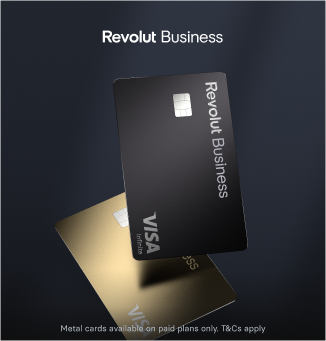Success stories sometimes happen overnight, but Ben Francis’ journey is one of resilience, learning on the fly, and getting creative when there’s no financial cushioning. His business, Gymshark, wasn’t born in a boardroom or backed by wealthy investors. The Gymshark story began when Francis was a 19-year-old student in his parents’ garage in Bromsgrove, Worcestershire.
Key Takeaways
- Gymshark started in a garage and has grown into a billion-dollar fitness empire with over 900 employees and customers in 230 countries.
- Ben Francis faced rejection from manufacturers, financial constraints, and multiple failed business attempts before Gymshark took off. Each setback became a lesson that helped shape the brand’s future.
- Francis turned down lucrative retail deals to keep Gymshark direct-to-consumer, demonstrating the importance of sticking to your company’s vision.
What is Ben Francis’ backstory?
In 2012, Francis juggled life as a student at Aston University while working as a Pizza Hut delivery man. Between shifts and lectures, he worked on a side project that let him combine his love for fitness with a growing interest in business.
Alongside his school friend Lewis Morgan, he launched Gymshark, incorporating the company that same year. In the beginning, it was little more than an empty website domain. The pair couldn’t afford stock without financial backing, so Francis chose a dropshipping model. He sold performance supplements through his website without actually holding any inventory. It was an effective strategy designed to keep risk low, yet it took two months before the first order arrived.
Gymshark was never just about making money. Francis was not following a grand entrepreneurial vision at the time. He was simply passionate about fitness and wanted to be a part of the industry. In an interview with Dr. Vikas Shah for Thought Economics, he later reflected on this.
I want Gymshark to be the brand that unites the conditioning community… that brings fitness into the reach of more people… gives people the opportunity to work on themselves physically and mentally. I wasn’t very good at school. I got in the gym and then I was good at school because I applied the principles I learned in the gym to my general life. I want more people to have that experience.
His ambitions for Gymshark extended beyond business; he wanted to create a brand that inspired transformation, just as fitness had transformed his own life.
Overcoming rejection
Although the supplement sales gave Gymshark a starting point, Francis soon realised that clothing was an even bigger opportunity. He began selling gym wear through the same dropshipping model. The products, however, were far from perfect. They could be described as baggy, generic, and not exactly physique-enhancing. That was when Francis decided to take things into his own hands.
Determined to create fitted, high-performing, aesthetic clothing, he reached out to manufacturers who could produce what he envisaged. But he faced rejection. Gymshark was an unknown brand with no sales history, and manufacturers were unwilling to take the risk. With no funding behind him, Francis had no leverage.
Learning to adapt

Rather than accepting defeat, Francis adapted. His mum taught him how to sew, and he set up a small production line in his parents’ garage, stitching Gymshark’s first products by hand. He screen-printed logos and packed orders by himself. When customers made a purchase, he personally delivered them.
Francis had no background in product development, so he taught himself about fabric technology and garment construction. Frustrated with the poor-quality materials commonly used in gym gear, he researched softer, more functional fabrics. This trial-and-error approach led him to refine his products’ fit, comfort and performance. Gymshark was no longer just a dropshipping business – it was becoming something unique.
- It’s never too late to start your own business – here’s why
- How to start a business in the UK
- Do I need a VAT number for my UK dropshipping company?
Reflecting on his earlier attempts at entrepreneurship, Francis later admitted in an interview with LADbible Stories that it’s “so easy to look at Gymshark in isolation as this thing that blew up and did incredibly well, but people forget about the seven websites and the four apps that were produced beforehand which failed miserably. And the reason Gymshark can exist and has done what it has done today is because of those prior failures”.
Every challenge and rejection had built the foundation for Gymshark’s success.
Taking risks to get Gymshark in front of the right audience
By 2013, Gymshark was beginning to gain traction, and Francis saw an opportunity that could take the business to the next level. The BodyPower Expo in Birmingham was the UK’s largest fitness event, bringing together athletes, brands and lifters. Attending as a visitor the year before, Francis had seen the potential of showcasing his brand at the event. This time, he wanted Gymshark to have its own stand.
The problem was that booking a stand would cost every penny the company had. If it failed, there would be nothing left. But Francis took the risk, and it paid off. The moment the expo opened, the Gymshark stand was flooded with visitors. Athletes, fitness influencers and fans crowded around the booth, drawn to the brand’s distinct aesthetic and performance-driven designs.
As demand soared, Francis took another risk and dropped out of university to focus on Gymshark full-time. Soon after, he launched the Luxe Tracksuit, Gymshark’s first premium product. For the second time in six months, he emptied the company’s bank account to fund production – another colossal gamble. When it launched, the tracksuit sold out almost instantly, and Gymshark went from making £300 a day to £30,000 in 30 minutes.
Scaling without losing the startup spirit
As Gymshark’s popularity grew, so did pressure from investors, retailers and industry leaders, who approached Francis with offers to take the brand into retail stores. Although many saw this as the logical next step for the business, Francis refused. In a conversation with Dr. Vikas Shah for Thought Economics, he says, “I was working on the principle that if you only listen to the voices around you, you’ll amalgamate them into something that already exists”.
Francis had a vision for Gymshark. He knew that the future was direct-to-consumer (D2C), and he was determined to build a brand that connected with its audience on a personal level.
Gymshark kept full control over its pricing, branding, and customer experience by remaining direct-to-consumer. Rather than placing products on retail shelves, the company built direct customer relationships through social media, events, and athlete partnerships. This approach fuelled Gymshark’s success and brought fitness enthusiasts together.
Evolving from an empty website domain to a billion-dollar brand
Gymshark continued to expand. By 2016, it had outgrown its small office spaces and moved into a dedicated headquarters in Solihull with its own restaurant, private ideation spaces, sleep pods, and more. In 2020, American investor General Atlantic took a 21% stake in the business, valuing Gymshark at over £1 billion and giving it ‘unicorn status’. The deal propelled Francis to billionaire status.
The company has over 900 employees, a social media following of 18 million, and customers across 230 countries. With this kind of growth comes a risk of losing the brand’s original vision and identity. The company is highly aware of staying true to its roots. So, to ensure it stays authentic to its primary audience, former Gymshark athlete David Laid has been appointed Creative Director of Lifting. His role is to shape product direction and reinforce Gymshark’s identity as a brand built for lifters, by lifters.
Lessons from the Gymshark story
Gymshark’s trajectory is impressive, and Ben Francis’ journey is one of resilience, adaptability, and an unwavering brand mission. He had no industry experience, funding, or formal business plan, yet he built a billion-dollar brand from scratch. He learned to navigate rejection, embrace failure, and take risks.
From a student in the Midlands, sewing gym wear in his garage, to leading one of the most influential fitness brands in the world, Ben Francis has demonstrated that passion, perseverance and innovation can turn the most humble of beginnings into something extraordinary.
Are you inspired to set up your own company? Our team of company formation experts can answer any questions about starting and running a limited company. Alternatively, you can explore the 1st Formations Blog for more guidance on launching your own business.
Please note that the information provided in this article is for general informational purposes only and does not constitute legal, tax, or professional advice. While our aim is that the content is accurate and up to date, it should not be relied upon as a substitute for tailored advice from qualified professionals. We strongly recommend that you seek independent legal and tax advice specific to your circumstances before acting on any information contained in this article. We accept no responsibility or liability for any loss or damage that may result from your reliance on the information provided in this article. Use of the information contained in this article is entirely at your own risk.










Join The Discussion
Comments (4)
This was an amazing read! It was great learning about the beginnings of Gymshark story for my own expert financial advice UK business.
Thank you for your kind words, David.
We’re delighted that you enjoyed reading our latest blog post.
Kind regards,
The 1st Formations Team.
Thanks for the article! It was great learning about the beginnings of Gymshark story for my own expert financial advice UK business.
Thank you for your generous feedback, David.
We’re happy to hear that our most recent blog was to your liking.
Kind regards,
The 1st Formations Team.